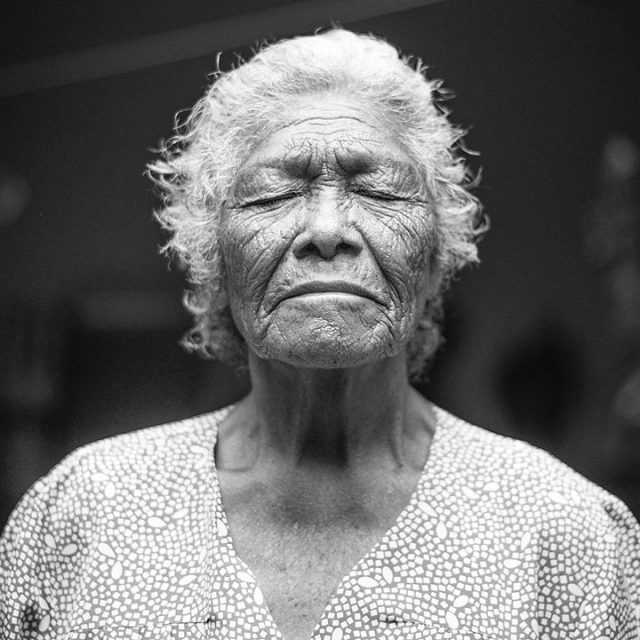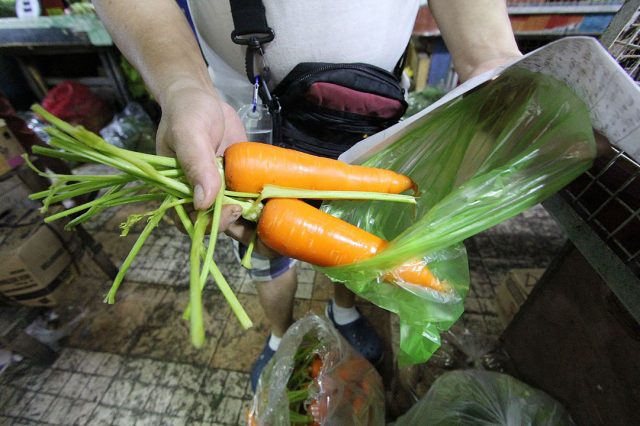Arts & Culture (09/29/21)
BP presents podcast series
BALLET Philippines (BP) now has a podcast series called BP Barre Talks where the discussion features ballet and beyond, “bringing to light messages of relevance, hope, and inspiration.” The first episode, entitled “Laging May Pag-Asa,” discusses BP’s latest video creation that sheds light on mental health for suicide prevention. The podcast includes insightful advice from guests Jeannie Goulbourn, Dr. Romeo Enriquez, attorney Marie Sicangco, and Stephen Cu. The podcast is available on Spotify Premium.
Fully Booked holds Banned Books discussion
FULLY Booked will hold a talk on Banned Books via Instagram Live on Oct. 1, 5 p.m. The discussion will cover the power of stories that break borders and barriers. Interested parties who have a book community or wish to start one can download the free Banned Book Club Kit (https://fullybookedonline44865.ac-page.com/fully-booked-online) with book recommendations, tips on starting a book club, and more. Enjoy 10% off on d-coded titles from Fully Booked’s #BannedBooks collection from Sept. 29 to Oct. 2.
BenCab Museum opens 2 exhibits
TWO new exhibits are opening at the Bencab Museum in Baguio on Oct. 2, 4-6 p.m. At Gallery Indigo, there will be a collaborative project called “Double Vision,” featuring National Artist Benedicto “BenCab” Cabrera and Ronald Ventura. The two artists represent two different generations of artists, yet their careers share parallels in terms of prolific production, market presence, and institutional recognition. Though both have expressed distinct artistic voices, their style, techniques, themes and subjects share some common grounds. This collection of works describes a world in a state of flux, with images constantly layering and crowding — but one in which vestiges of the past persist to be entangled with the dissonance of the current times. The exhibit will run until Nov. 28. Meanwhile, at the Sepia Gallery, an exhibit called “Gentle Thoughts”, featuring works by Ric Maniquis, will run from Oct. 2 to Nov. 2. The artist started on his photo series 10 years ago, focusing on images that inspire a sense of quiet and calm. The BenCab Museum is at Km. 6 Asin Road, Tuba, Metro Baguio. It is open Tuesdays to Sundays, 9 a.m. to 6 p.m.
Seminar on wartime postcards
VESSEL: The Jung Art Collective and Carl Jung Circle Center are presenting a seminar which revolves around art and history on Oct. 2, 4 p.m., via Zoom. The seminar, Wartime Postcards: Japanese Artists View World War I in the Philippines, will feature Dr. Ricardo Trota Jose. The seminar fee is P500 (regular) and P200 (student) To register, contact 0922-887-8757 or e-mail jungphilippines@yahoo.com.
Author Myke Celis partners with Bookshelf PH
BOOKSHELF PH, a local publishing house and online bookstore that also operates an audiobook platform called Audiophile, has announced the signing of global master coach and international best-selling author Myke Celis for an upcoming book. In 2020, Mr. Celis released two books — Best Me Ever: A Self-Discovery Workbook to Heal Your Past, Accept Your Present and Find Yourself Again and Best Me Ever Powerful Questions To Know Yourself: Understand Yourself Better And Be Your Best Self — both of which became international best sellers on Amazon. As the newest addition to the Bookshelf PH family, Mr. Celis plans to release a new book that sheds light on how readers can manifest their #bestmeever in the digital world. The book will tackle different online topics and concerns such as how to do proper presentations, strike respectful conversations, avoid unpleasant situations, and more.
Fund-raising auction goes virtual
THE SANTUARIO de San Antonio Parish (SSAP) Francisfest presents SpectaculART 2: An auction of art, jewelry and homeware on Oct. 1 to 3, with both new and pre-loved pieces going under the hammer. The proceeds of the auction shall assist in the numerous Social Services and development ministries of SSAP and its sister parishes. SpectaculART 2 will feature fine jewelry, estate jewelry, artisan pieces and an assortment of diamonds, pearls and colored stones. The homeware collection will feature European, Asian, and locally sourced pieces ranging from antique, vintage, and contemporary furniture and home décor. This year, SpectaculART 2 shall showcase a selection of works created by National Artist for Visual Art Carlos “Botong” Francisco, Impy Pilapil, Romeo Tabuena, and Anita Magsaysay Ho, Gus Albor, Ramon Diaz, Jojo Guingona, Noli Principe Manalang, Isabel Campa, Ivy Lim, and Marivic Rufino. Unique prints by Salvador Dali and John Lennon will also be for sale. Works of numerous up-and-coming artists will also be available. Online viewing is ongoing at www.spectaculartph.com. Selected items can be viewed by appointment at the San Antonio Parish Center. Online bidding is from Oct. 1 to 3 at www.spectaculartph.com. For more information visit www.Instagram.com/SpectaculArt.ph or www.Facebook.com/SpectaculArt.ph or e-mail hello@spectaculartph.com.
Group show Appassionata shows passion
“APPASSIONATA” is a group show featuring the works of five women artists — Rosario Bitanga, Imelda Cajipe Endaya, Lenore RS Lim, Susan Fetalvero-Roces and Maria Victoria Rufino. In 2013, art critic-artist Cid Reyes attended a show at the AltroMondo Gallery of that same name which featured the same artists. The show fascinated Reyes. “I felt that the word ‘appassionata’ captured the essence of someone who, besides being a woman also happens to be an artist. And if there’s any activity where passion is a requisite, it is painting or art making. Actually, whether it’s singing, dancing, or acting, or anything related to self-expression, passion must predominate, the emotion that must unleash the talent and technique possessed by the person,” he wrote. The idea resurfaced with the pandemic, and he offered the group of artists the use of his daughter’s gallery, Galerya Amalia, at the Ayala Malls, Manila Bay. The opening date — Sept. 18 — was the same date when the first “Appassionata” was held. The 2021 version is being held both online and live. It runs until Oct. 18. Rosario Bitanga is “a pioneer of Philippine abstraction… whose abstract works are arrested motion of sails, birds, winds, galloping horses, the blossoming of petals, and still lifes that seem to defy stillness with the inherent tension within her compact and solid compositions,” say the gallery notes. Printmaker, painter, mixed media and installation artist Imelda Cajipe Endaya’s “distinct feminine visual language informs a range of themes: from race, gender, the diaspora, globalization, women’s empowerment and rights, and now — our nightmare pandemic times.” Filipino-Canadian-American artist Lenore RS Lim “specialized in computer art and printmaking techniques ranging from lithography, solar etching to monotype, collotype and chine collé. Ms. Lim was a recipient of the Philippines Presidential Award and the Jackson Pollock-Lee Krasner Foundation Grant.” Susan Fetalvero-Roces is described as being “adventurous and experimental in her choice of medium and material” who is “distinguished by her innovative choice of material — raffia, being the most memorable — and a radiantly emotional approach that intuits the next direction of her art.” Watercolor is Maria Victoria Rufino’s favored medium. Her “intimate relationship with her material rewards her with images of luminous landscapes, seascapes, and other facets of nature.” View the exhibit online at www.galeryaamalia.com.
Robinsons launches Christmas Card Making tilt
IN THE SPIRIT of Christmas, Robinsons Land ARTabado is inviting children to remember their happy and fun memories at Robinsons Malls through a drawing competition entitled: ChristmaSAYA sa Robinsons Malls. Through this card making contest, ARTtablado wishes to encapsulate wonderful memories and immortalize them in Christmas Cards to be drawn by children from all over the Philippines. The competition has two divisions. Division 1 is open to Filipino children aged six to eight years old while division 2 is open for Filipino children aged nine to 12 years old. Participants may submit only one entry. Artwork should be an A4 size (8.3 x 11.7 inches) paper or board, using the following media: colored or graphite pencil, ink, pastel, crayon, chalk, marker, or charcoal for drawing and acrylic, watercolor, or oil for painting. The contestant’s name must not appear on the artwork. The artwork and entry form should be submitted to the Facebook messenger of ARTablado on or before Oct. 15 for the preliminary judging. This should contain name, birthday, age, contact number, title of the artwork, and a brief description about the piece (50 words or less). Finalists will be announced in November and winning entries will be announced in December. Winners for both divisions will get P15,000 and a certificate. Second prize winners get P10,000 and a certificate. Third prize winners get P5,000 and a certificate. Up to 22 finalists will be selected for both division, each of whom will be handed P2,000. A special award will also be given. All winning entries will be part of the 2021 Robinsons Land ARTablado collection and will be exhibited at ARTablado. Winning designs will also be used for RLC’s Christmas cards and collateral materials. For the complete list of 2021 Robinsons Land ARTablado Painting Competition’s rules and regulations, visit the ARTablado Facebook page https://www.facebook.com/ARTablado.





















